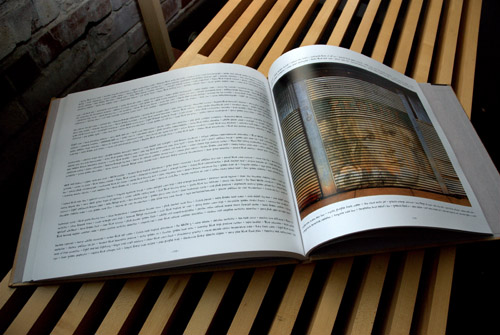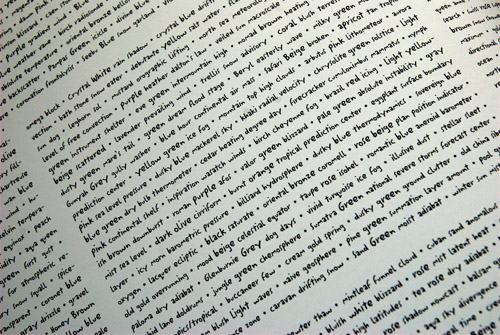The 2011 PUARL Conference, staged for October 28-31, 2011 was located at the University of Oregon in Portland White Stag Building. The focus of the event addressed “Generative Process, Patterns, and the Urban Challenge”. PUARL’s series of conferences intended to contribute to the global development of new Pattern Language approaches. Recently, I invited Professor Hajo Neis, Associate Professor, Director of PUARL and organizer of the conference to provide this blog post with his comments on the event. His comments are provided below:
Following the successful First International PUARL Symposium in the Fall of 2009 with the authors of the seminal book “A Pattern Language” at the center of attention, the Second International PUARL Conference 2011, centered again around the overall pattern language approach, but also exploring the boundaries of the field with new concepts and expanding into other disciplines and fields of enquiry including an exciting array of national and international speakers and participants. The PUARL International Conference is conducted every two years at the University of Oregon Portland Urban Architecture Research Laboratory Whitestag Building in Downtown Portland. The main theme of this year’s October 2011 conference was entitled “Generative Process, Pattern Language, and the Urban Challenge.” Patterns and pattern languages are the most well-known elements of this school of thought and they form an essential method and central part of an ongoing investigation and practical application also at PUARL. They have been successfully applied in thousands of architecture and urban projects, including continuous application in the University of Oregon Planning Process in Eugene, and including design application for the White Stag buildings here in Portland. Patterns and pattern languages were originally developed by Chris Alexander, Sara Ishikawa, Murray Silverstein and others in Berkeley at the Center for Environmental Structure (CES), for the purpose of providing a sound understanding of environmental elements and their qualities in a systematic and methodical fashion. Originally developed in and for the field of architecture design, patterns are now not only researched and applied in the field of architecture and urbanism, but they also made a triumphal journey into as large number of academic disciplines and professional fields: In particular the method is widely applied in computer science, as for example the invention of the well-known ‘wiki’ well demonstrates (a wiki is based on the structure of a pattern). Patterns and pattern languages are ideal ways of solving problems not only in the field of architecture and urban design but in a large variety of disciplines, and they could be particularly useful in interdisciplinary research and application as a common method that connects different fields, trying for example to solve complex urban problems.Recent work in this area of investigation is focusing on what is called ‘generative process,’ generative design, and generative (urban) codes, where pattern languages form one kind of such a generative system or process. Consequently in our 2011 conference the emphasis was on the topic of generative process with an expanding participation and audience within architecture and architects but also connecting to a variety of other disciplines, such as social science, psychology, semiotics, language, art, music and computer science. Here, the presentations of parametric computer designs as part of generative design marked an important and worthwhile connection. Hence, the conference focused on advanced issues of Generative Process and Pattern Languages as well as current Urban Challenges that we are more and more faced with, such as large population increase with more urbanization and the growth of many more cities in the world with its ensuing problems. The question was asked, what is needed in the world, and what can patterns and pattern languages as well as generative processes and design contribute to solving some of the world’s new urban problems. The three day conference was a definite success, with more than forty contributions by national and international scholars from the US and abroad. With around hundred participants, the conference was also well frequented and accepted by our students here in Portland at the University of Oregon. Starting with the PUARL keynote lecture by Professor Don Corner (The Roots of Deep Energy Retrofit), and continuing with a keynote contribution by Professor Wolfgang Stark from the University of Duisburg-Essen (Innovation & Improvisation Patterns for Organizations & Social Systems), a contribution by Professor Howard Davis (Resilient Urban Morphologies), as well as a lecture by Language Professor Jens Gurr (The ‘Cultural Dimension of Sustainability’ in Urban Systems), the conference was appropriately concluded with a keynote lecture by Professor Dieter Hassenpflug from the Bauhaus University in Weimar, Germany with the title: “Another Language of Patterns: Semiotics of Chinese Urban Space.”The next conference in two years is projected to possibly take place in the ‘Ruhr-Metropolis’ in Germany at the University of Duisburg-Essen. The theme of the conference is envisioned as ‘World Patterns and Urban Systems.’
“Generative Process, Patterns and the Urban Challenge,” sought to investigate the nature of generative process, generative design, and the relationship to pattern languages as well as the day-to-day urban challenges facing a global and wholistic design perspective. The fundamental purpose of PUARL is to conduct and promote activities in urban architecture research and urban design research: the lab attempts to integrate wholeness and sustainability into the architectural and urban design process by conducting basic and applied research throughout the Portland region (and also other parts of the nation and the world) in urban morphology, urban building typologies, and urban processes for civic groups, public agencies, professional firms and development interests. PUARL is a part of the Department of Architecture at the University of Oregon in both Eugene and Portland. PUARL works to explore urban morphology and urban patterns, urban building typologies and patterns, and urban ecology and urban landscapes.
Please contact PUARL: puarl.uoregon.edu
Related Websites:
Living Neighborhoods
For more information and to inquire about availability of this year’s 2011 PUARL publication please contact:pdxarch@uoregon.edu503-412-3718
Hajo Neis | (503) 412-3731 | hajoneis@uoregon.edu | Associate Professor and Director | Portland Architecture Program | Website http://www.uoregon.edu/~hajoneis/
Howard Davis | (541) 346-3665 | hdavis@uoregon.edu | Professor, Department of Architecture
Don Genasci | (503) 725-3732 | dgenasci@uoregon.edu | Professor, Department of Architecture
Post and photos sabina samiee











